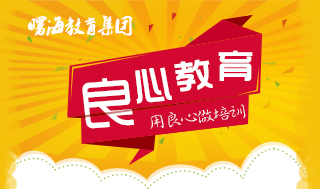| |
Design Patterns培訓 |
| |
 班級人數(shù)--熱線:4008699035 手機:15921673576( 微信同號) 班級人數(shù)--熱線:4008699035 手機:15921673576( 微信同號) |
| 增加互動環(huán)節(jié),
保障培訓效果,堅持小班授課,每個班級的人數(shù)限3到5人,超過限定人數(shù),安排到下一期進行學習。 |
 授課地點及時間 授課地點及時間 |
上課地點:【上海】:同濟大學(滬西)/新城金郡商務(wù)樓(11號線白銀路站) 【深圳分部】:電影大廈(地鐵一號線大劇院站)/深圳大學成教院 【北京分部】:北京中山學院/福鑫大樓 【南京分部】:金港大廈(和燕路) 【武漢分部】:佳源大廈(高新二路) 【成都分部】:領(lǐng)館區(qū)1號(中和大道) 【廣州分部】:廣糧大廈 【西安分部】:協(xié)同大廈 【沈陽分部】:沈陽理工大學/六宅臻品 【鄭州分部】:鄭州大學/錦華大廈 【石家莊分部】:河北科技大學/瑞景大廈
開班時間(連續(xù)班/晚班/周末班):2020年3月16日 |
 課時 課時 |
◆資深工程師授課
☆注重質(zhì)量
☆邊講邊練
☆若學員成績達到合格及以上水平,將獲得免費推薦工作的機會
★查看實驗設(shè)備詳情,請點擊此處★ |
 質(zhì)量以及保障 質(zhì)量以及保障 |
☆
1、如有部分內(nèi)容理解不透或消化不好,可免費在以后培訓班中重聽;
☆ 2、在課程結(jié)束之后,授課老師會留給學員手機和E-mail,免費提供半年的課程技術(shù)支持,以便保證培訓后的繼續(xù)消化;
☆3、合格的學員可享受免費推薦就業(yè)機會。
☆4、合格學員免費頒發(fā)相關(guān)工程師等資格證書,提升您的職業(yè)資質(zhì)。 |
☆課程大綱☆ |
| |
- Introduction
What is the Requirement Management Process ? Why Agile ?
Business agility and agile software delivery : Definitions
Linking Agile to Business : Business Motivation Model vs. Business Model Canvas,
How to effciently use the Value Proposition Canvas for defining the Product Vision ?
Business agility vs. agile software delivery principles
What is Agile Not ? Impacts of alignment with strategies and capabilities
Requirement Management in an Agile Context
Scrum Life Cycle : Issues about completeness of requirements and traceability
How productive models enhance communication in 'Agile' ?
Business Extensions of Agile : Structuring Business Value Contribution of a User Story
A Panorama of UML diagrams for modeling requirements
Frameworks for tracing requirements toward software implementation and tests
The 5 levels planning of an agile project (from Clarifying the Vision and Product Backlog to Tasks… and the Architecture Walking Skeleton)
Managing Requirements within Agile Methods (Scrum, DAD) vs. the Unified Process (RUP)
Roles, teams, environments
Presentation of the Case Study for Structuring requirements and managing them using an iterative process
How to describe the business vision and needs via traceable models ?
Qualification of the requirements : The Kano model vs. the Value Proposition Canvas
Structuring the Vision of the Product on the basis of strategies, environmental forces and trends
Value proposition, key activities, key resources, revenue streams and cost structures,
Discovering the business scope of the product using the customer needs, gains and pains
Describing business use cases using 'value streams' and 'value stages'
Bridging the business scope of the product with expected 'value contributions'
Case Study : Describing the vision of the product
How to describe user needs via agile use case modeling (epics and user stories) ?
Agile Estimating and Planning
Building and managing the product backlog / granularity of requirements
Ahead of the sprint planning
Creation of the sprint backlog
Agile User Story Pattern : system scope (the subject), actors, use cases, user stories, acceptance criteria, the INVEST model
The Walking Skeleton using Disciplined Agile Delivery : From Processes to Technology
How to find out epics and user stories on the basis of value streams ?
Value contribution of epics and user stories
Writing tasks : granularity and size using the SMART model
Case Study : Discovering epics and user stories on the basis of value streams
Validating and testing correct understanding of detailed specifications
Using an incremental requirement gathering process and the sprint backlog
Rules for efficient epic, user story and architecture descriptions
Diagrams for validating epics and user story descriptions
How to choose the right diagram ?
Refining features using use cases and relationships modeling
Testing correct understanding of requirements using Test-Driven Requirements
Given/When/Then structures and Operation Contracts for guiding developers in implementing requirements
Coverage analysis and change management
Case Study : Validating, testing and communicating detailed requirements to developers
Conclusion
Steps of efficient requirement gathering and system analysis processes
Traceability between requirements and analysis models
Patterns for gathering and testing requirements
Notice: The above training-mentoring sessions are conducted interactively using examples from Requirement Engineering and Modeling tools in order to ensure good level of traceability between requirements and underlying solutions. Concepts are first explained using basic examples and are then followed by solution drafts to your potential case. After this session, we can also accompany you by reviewing and validating your solutions depending on your needs.
|
|
|
|
|
|

